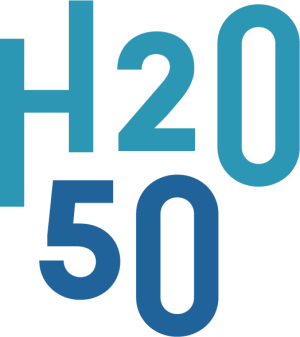The user engaged, space for creativity
If we bring the management of drinking water closer to the user, we create a safer system and greater water awareness. In the future, the composition of drinking water will increasingly be adapted to the preferences of the user. “The role of the government will then be to ensure that everything takes place within the framework. The user can decide the rest, which will lead to a new combination of central and decentralized services”.
“Bringing the product closer to the consumer stimulates creativity. A good example is San Francisco. Here, having a water policy is compulsory even at the building level. The nice thing is that people experience for themselves that they can do more with water.” Korneel Rabaey, member of the arena and professor, hopes that there will also be compulsory self-provision of water in Flanders in the future. “This will boost innovation. Many things are already possible in technological terms, it’s just a question of whether we are bold enough to take the step financially”. Korneel is convinced that technological investments will pay for themselves over time. “For example, there is already a brewery that purifies its own waste water. That investment will pay for itself within a few years”. Or take the port of Ghent, which is able to be self-sufficient. The only question that remains is, “Do we take the plunge”?
Water fund for radical and decentralised research
Ultimately, Korneel dreams of structural innovation and sees a water fund for radical water innovation based on the example of the excellent water sector in the Netherlands. “For me, structural research means from research to implementation, we shouldn’t just limit ourselves to replication.” Korneel already has a number of topics in mind and talks enthusiastically about the possibilities: ‘We have to look at salt flows in a different way, the technological challenge being able to separate salt. The knowledge and technology is here in Flanders, we have the skills, it can go faster”.
And on the example of the buildings in San Francisco “we resemble San Francisco a lot in terms of water quantities, I can picture a pilot of 100 buildings that are ready to set up their water policy at building level”. A decentralised future, greater awareness of water among users with plenty of room for structural innovation. If it were up to Korneel, it would be these steps that would help us progress in the coming years.
He sees us starting to work on issues such as “What is the scale of the circularity?” “At what level can you best be self-supported?” and “How do we connect water systems with each other?”
Download all catalysts
Disclaimer
The Flemish Environment Agency (VMM), De Vlaamse Waterweg, De Watergroep, Aquafin, the Flemish Department of Environment, Farys, Pidpa, water-link and VITO - Vlakwa have created the space for a group of fresh thinkers to develop a systemic view of water, and to challenge the water sector to shape a futureproof water system. The formulated ideas are not those of the initiators, nor do they represent their stands. However, they are considered valuable as an inspiration for the future of our water system.
This work is licensed under a Creative Commons Attribution 4.0 International License.
